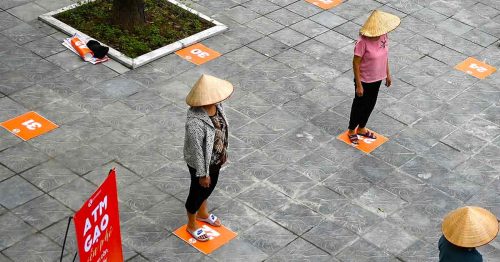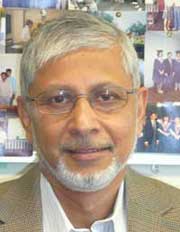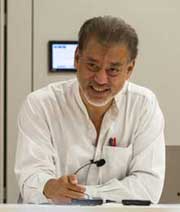Vietnam Winning New War Against Invisible Enemy
Por Jomo Kwame Sundaram, Anis Chowdhury (IPS)

HAVANA TIMES – Vietnam, just south of coastal China, is the 15th most populous country in the world with 97 million people. According to its Ministry of Health (MoH), as of 13 April, there were 262 confirmed cases of COVID-19, with 144 recovering or discharged from hospitals, and no deaths.
Poor country, early action
With officials acting quickly to trace and test contacts, as well as quarantine and treat the infected, Vietnam contained the first wave of infections in January. Following a second wave of 41 new cases, Vietnam imposed a national isolation order on March 31. The country has already conducted more than 121,000 tests, with more than 75,000 people in quarantine or isolation.
After more than a dozen people, linked to Bach Mai Hospital in Hanoi, tested positive, authorities have been tracing contacts, advised more than 10,000 people who were at the hospital since March 12 to get tested, and locked down a nearby rural hamlet for 14 days.
The Australian Strategic Policy Institute noted “Vietnam’s experience demonstrates how, by focusing on early risk assessment, effective communication and government-citizen cooperation, an under-resourced country with a precarious healthcare system can manage the pandemic. In facing an indefinite unknown, decisive leadership, accurate information and community solidarity empower people to protect themselves—and each other.”
The influential World Economic Forum,the Financial Times and others laud Vietnam as a low cost Covid-19 success story to be emulated by poor countries with limited resources.
Containing infection, Vietnam-style
While much more resource constrained, some key features of Vietnam’s response are similar to other much lauded East Asian responses, with its infection rates significantly lower than even Taiwan’s. For many other developing countries struggling to cope with the Covid-19 pandemic, key aspects of its response are very relevant.
Early action
Having experienced the SARS1, avian flu and other recent epidemics, Vietnam acted early and pro-actively in response to the COVID-19 threat. When only 27 Covid-19 cases had been detected in Wuhan City in mid-December 2019, Vietnam’s MoH issued prevention guidelines, including close monitoring of border areas and other steps to prevent infection of its population.

When China officially confirmed the first death due to the novel coronavirus on 11 January, Vietnam quickly tightened health checks at all borders and airports. Visitors’ body temperatures are checked on arrival; anyone with symptoms, such as cough, fever, chest pain or breathing difficulties, is quickly isolated for testing, and strictly monitored at medical facilities, while recent contacts are traced for follow up action.
Other tough measures followed, including closing schools, rationing surgical masks, cancelling some flights, and restricting entry to most foreigners. They have been imposed unevenly, as needed, rather than as blanket, across-the-board measures. The government has asked all citizens to make online health declarations, and regularly texts updates nationwide.
Selective quarantine
Vietnam was the first country after China to seal off a large residential area. After cases were traced to workers returning from Wuhan, it imposed a 21-day quarantine on 13 February in part of Vinh Phuc province, north of Hanoi, where more than 10,000 people live.
The government also ordered that all arrivals in the country be quarantined, while those who arrived after 8 March are required to undergo medical evaluation. Two communes were put under lockdown on 9 March after a British tourist with the virus visited them.
Affordable effective testing
Vietnam developed a fast, efficient and affordable test kit within a month. Many countries have already shown interest in the kit which uses a WHO-approved technique. Rapid development of the kit followed extensive urgent consultations with a wide range of scientists coordinated by the Ministry of Science and Technology.

Rather than mass testing, key to wealthier South Korea’s response, Vietnam has focused on isolating the infected, and tracking down their ‘primary’ (direct) and ‘secondary’ (next-level indirect) contacts in order to trace and test those more likely to be infected.
Concerned about stigmatization, Vietnam refers to infected persons by their case numbers. Exceptionally, the communist party government published the identity and itinerary of a prominent figure who had tested positive. When local businesses were reportedly ostracizing foreigners, the prime minister spoke out against such discrimination.
Social mobilization
Medical students as well as retired doctors and nurses have been mobilized. According to Tran DacPhu, a senior adviser to Vietnam’s Emergency Operation Centre, “We have to mobilize all of society to the best of our capability to fight the outbreak together, and it’s important to find the cases early and isolate them”.
A fund-raising campaign to buy medical and protective equipment for doctors, nurses, police and soldiers in close contact with patients, and for those quarantined, was launched on 19 March. By 5 April, more than 2.1 million appeals had been texted, with a considerable sum raised for the relatively poor society.
Transparency
The MoH’s online portal immediately publicizes each new case to all major news outlets and the general public, with details including location, mode of infection and action taken. Information is broadcast by television and via social media, including texts to all handphones.
Different ministries have jointly developed an ‘app’, reputedly very easy to use, allowing users to: submit health and travel information to get tested; know ‘hotspots’ where new cases have recently been detected; and get up-to-date information regarding ‘best practices’ in Vietnam and the world.
Vietnam’s response has earned a high level of trust among its citizens. About 62% of Vietnamese surveyed, in the single largest global public opinion study on COVID-19, think the Government is doing ‘right’, compared to the global average of around 40%.
Solidarity
While some rich countries act selfishly, Vietnam is following in the steps of Cuba and China in demonstrating humanitarian solidarity in the face of the Covid-19 threat to humanity.
It has shipped 450,000 protective suits to the US for healthcare professionals and donated 550,000 masks to five European countries. Vietnam has also donated protective clothing, medical masks, testing equipment and kits – worth over US$300,000 – to Cambodia and Laos, and testing kits to Indonesia.
Emphasizing the importance of social solidarity, Prime Minister Nguyen Xuan Phuc has described Vietnam’s efforts to contain the virus as the “spring general offensive of 2020”, referring to the crucial 1968 Tet Offensive by ‘Viet Cong’ guerrillas during its last war.

Stephen, the Government of China stated that the virus of Covid 19 originated in Wuhan. But, I can understand if you don’t believe them, for misinformation is a fine art in communist regimes.
Clearly, like Fidel Castro over forty years ago, you don’t believe that Vietnam’s adoption of capitalism is an accolade – although it has evidently served them well , for example Cubans are largely dependent upon rice from Vietnam (2.7% of Cuba’s imports) for the permuta. All credit to Vietnam’s production and marketing.
Yes, I like to be guided by fact. As I wrote previously: “Apart from the Chinese government, no one knows the current status of COVID-19 in that country.” You may have noticed that since then, China has admitted that the figures they gave the WHO for Wuhan were incorrect by a factor of 50%, which again may well be below the actual figure. However, China has a fairly dense population, so there is every possibility that the virus is continuing to rage across the country, in which case it could well cross the border creating a second wave in Vietnam.
It is however possible that Vietnam could learn from Germany being of similar population, regarding that as despite having borders with several countries, it has managed to successfully limit the virus in comparison with those neighbours.
Carlyle,
My mind is clear. Let me elucidate to you how yours is closed minded and erroneous.
“Vietnamese’ resilient, persistent, and perseverant” – AND CAPITALIST”. You added the political factor in capitals.
You have also stated to me. “Let us be guided by fact” in another post. Correct?
Do you know what the difference is between a fact, inference and judgement? Obviously not. A fact needs verifiable information to make it a fact. “CAPITALIST” imbued into the discussion makes the above statement factual? Really? No intelligent person would make that leap. Obviously you do which clearly demonstrates your confusion.
“CAPITALIST” may be an inference – a guess – maybe. So you guess that “CAPITALIST” plays a role in the discussion which now brings in your value judgement. In your mind, and not the mind of anybody else, presumes that “CAPITALIST” plays a significant role. Where is the verifiable evidence for your asinine assertion?
You are not in the world of factual information; value judgements, in your closed minded world, are about all you espouse.
Again, Carlyle, as you eloquently state: “Let us be guided by fact”. How many times need I repeat your words back to you so that you understand? Stick to the facts and leave value judgements to unlearned children.
Oh Stephen, in your enthusiasm, you missed a couple of words unless of course that was one of the “other accolades to which you referred.
“Vietnamese’ resilient, persistent, and perseverant” – AND CAPITALIST.
Re-read what I wrote, the first two lines are unquestionably correct. The second two lines express concern about the risk of the Chinese epidemic crossing the border, which would create a second wave of infection. The last two lines are undeniably correct – those of communist persuasion are just as susceptible as the capitalists.
My mind is clear, as is your confusion.
Carlyle,
“Collective conscience” in the context I wrote means the Vietnamese’ resilient, persistent, and perseverant, among other accolades, ability to meet a crisis head on and win. Collectively they have demonstrated this in the past and based on the factors they are following will no doubt prevail in this pandemic.
What I wrote has absolutely nothing to do with “political view” that in your mind portends will have an impact on an invisible invader. To even suggest or imply it does demonstrates, I will be quiet frank, your historical ignorance.
Only time will tell. This pandemic started in Vietnam’s neighbour, China. Apart from the Chinese government, no one knows the current status of COVID-19 in that country. But if the virus is continuing to rage there, the risk of it crossing the border as a dry-land tsunami into Vietnam, is high. It is almost poetic to speak of the “collective conscience” of the people of Vietnam as if their political view will shield them from the virus, but in reality those of communist persuasion are just as susceptible as the capitalists. DNA is common to all.
Here is some very positive news regarding the pandemic. The world has much to learn with how successfully Vietnam is fairing in combating this vicious COVID-19 virus.
Notice the country makes no reference to potential drugs that some countries are administrating to their residents without any medical clearance that the medication is effective in helping to stop the virus.
Vietnam attributes its success to factors every country needs to learn to adopt for the future : early action, quarantine, laser like testing by tracking carriers’ contacts, buy in from all of society, transparency, and solidarity.
Countries with the highest death rates unfortunately have been remiss in not following many of these Vietnam successful factors.
One other advantage this country has and uses it to its advantage is its courageous historical battle facing not a powerful, pandemic, – an invisible enemy – but a very visible foe just as determined, mighty and potent: the United States military during the Vietnam War.
This huge victory ingrained in the collective conscience of every Vietnamese citizen says there is nothing we cannot defeat – visible or invisible – in this world if collectively the planned ultimate aim is victory. Nothing else is acceptable.